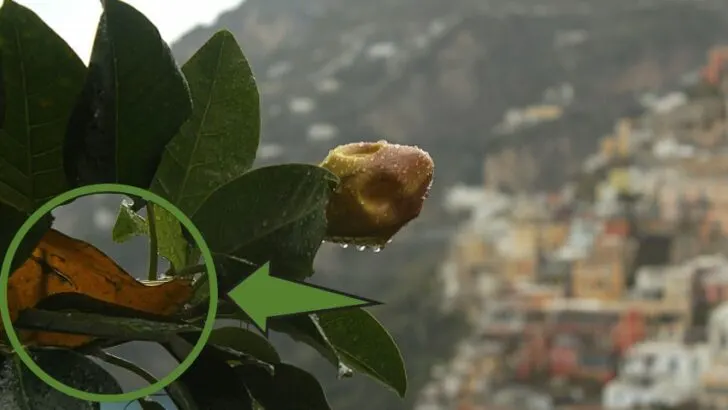Any avid gardener can tell you how disheartening it can be when Mandevilla leaves are turning brown.
Mandevilla can be fussy, but there’s no cause for panic when you have the knowledge to help them thrive.
I struggled with my Mandevilla plants for a long time and ended up with brown leaves all the time until I found the culprits.
Table of Contents
Mandevilla Leaves Turning Brown
There are a few reasons that Mandevilla leaves may turn brown, including inconsistent watering, environmental stress, bacterial wilt, and fungal attacks. Inconsistent watering may be the leading player, but usually, there’s more than one contributing factor to the browning of your Mandevilla leaves.
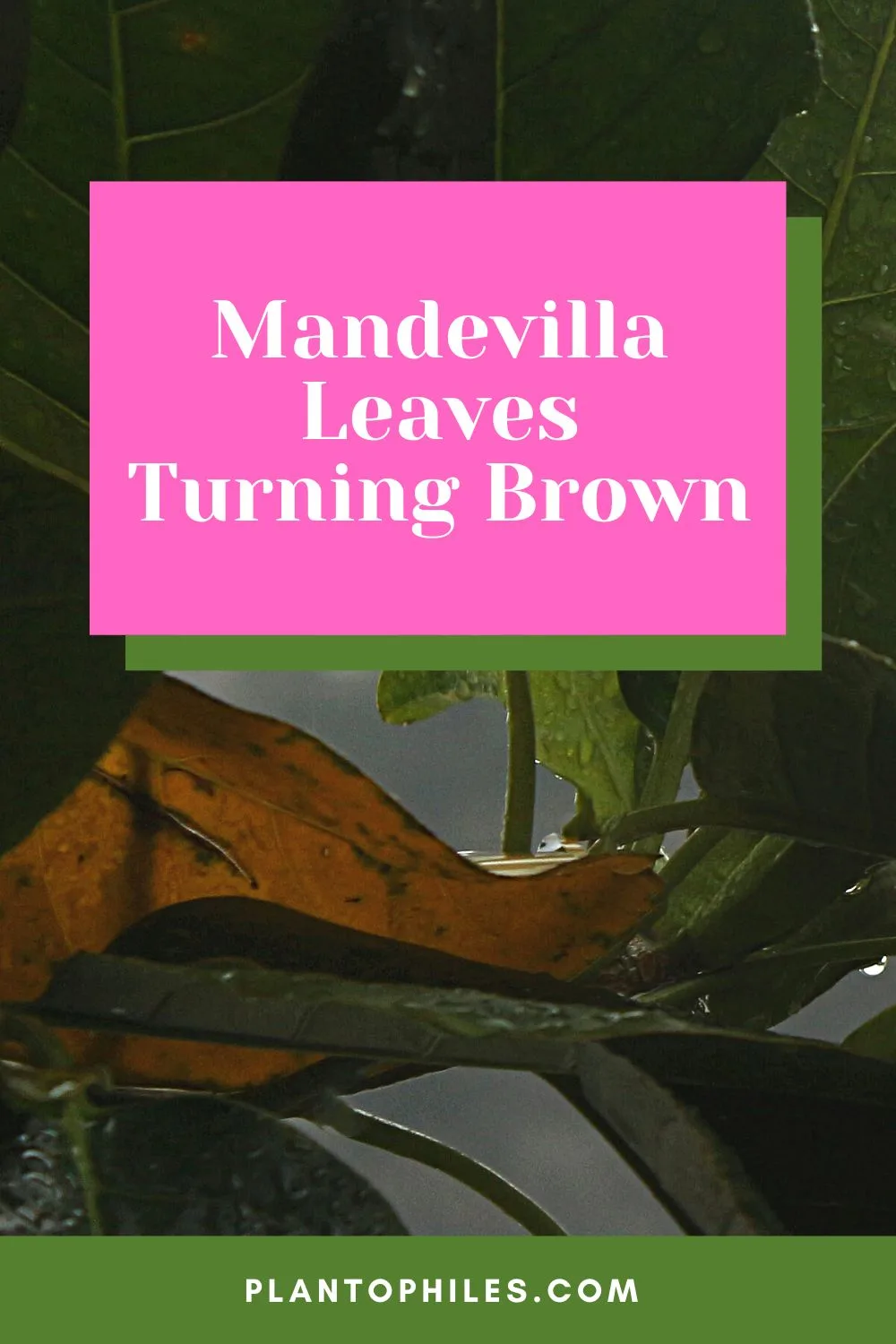
4 Reason for Brown Mandevilla Leaves
If you have a Mandevilla that was chugging along happily, showing zero signs of distress, and now has brown, wilting leaves, there could be a few explanations.
The most common causes of Mandevilla leaves turning brown are inconsistent watering, environmental stress, fungal attacks, and bacteria wilt.
I will break each of these issues down further, so you can understand the root causes, no pun intended, and how to correct them.
This content will provide you with a brief guide, or checklist, that you can turn to when your Mandevilla leaves turn brown or begin to wilt.
1. Inconsistent Watering
Mandevilla plants love nutrient-rich soil, primarily when that soil drains well. Mandevilla that lack nutrients and water will begin to form brown spots on their leaves, and eventually, those leaves will fall off.
You can check the moisture of your Mandevilla soil by sticking your fingers about two inches below the soil surface. If it feels dry, your Mandevilla is very likely underwater.
You can remedy this by deep watering the plant with your hose or a watering can with a long nozzle and sticking it into the soil around the roots.
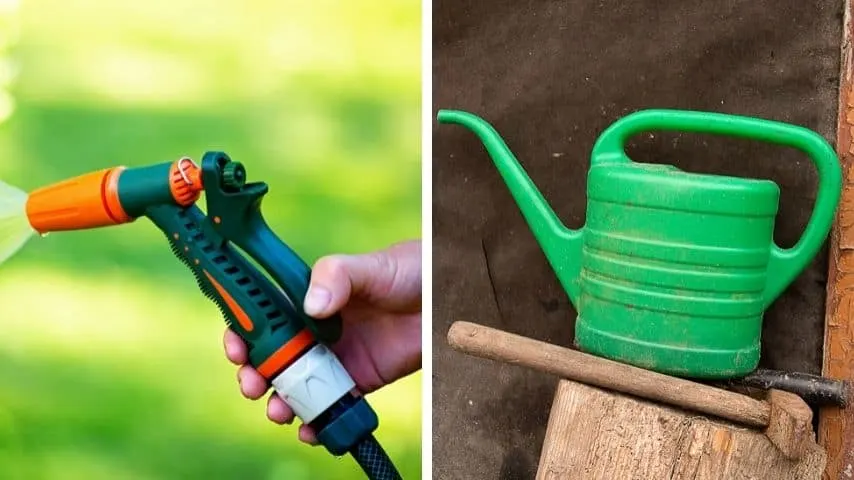
Check your Mandevilla more often when it’s hot outside, as the soil tends to dry out faster. You can deep water your plants when the soil is dried out two inches below the surface.
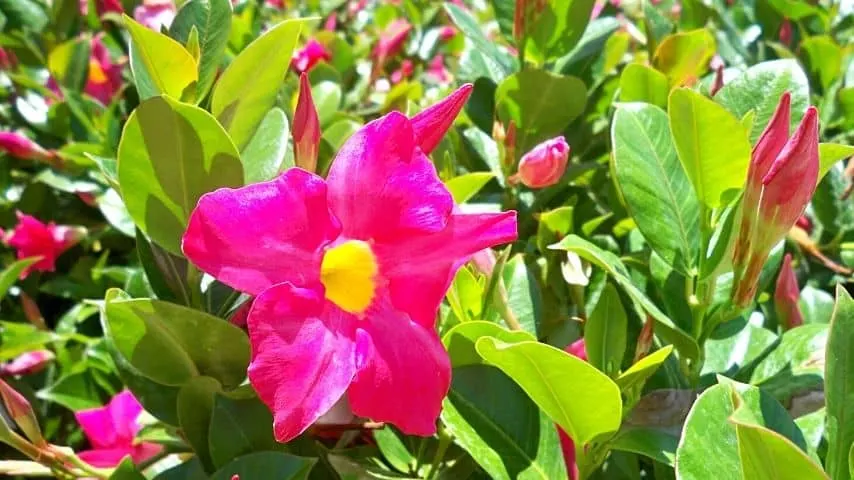
2. Environmental Stress
Stresses in the surrounding environment can directly affect any plant, Mandevilla included.
Mandevilla requires around six hours of direct sunlight daily, they despise temperatures lower than 45 degrees Fahrenheit, and over-fertilizing them can cause disastrous results.
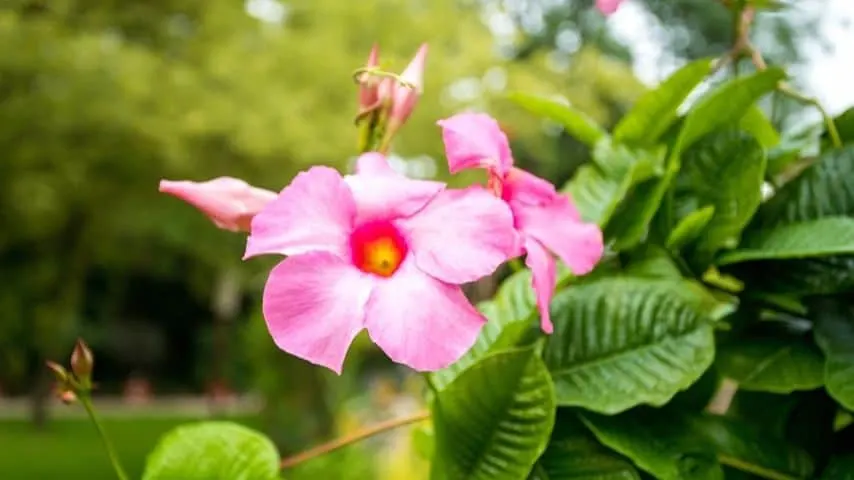
As I said, Mandevilla can be fussy! Any changes from ideal growing conditions, such as rapid temperature fluctuations and scorching afternoon sun, can cause leaves to form brown spots.
If you believe environmental stress is the issue, re-pot over-fertilized plants and move those that get too much afternoon sun into the shade.
If you live in a very seasonal climate, keep Mandevilla outdoors in the summer and inside during the winter. Never fertilize Mandevilla in the winter when they’re dormant.
The environmental rules are simple but crucial to keeping your Mandevilla leaves from browning.
3. Fungal Attacks
Mandevilla plants can fall victim to various fungal attacks, including sooty mold, fungal leaf spots, and stem rot.
Mandevilla may also come down with Botrytis blight, standard when these otherwise tropical plants live in cooler climates.
Fungal leaf spots are common, and you’ll notice them by the brown spots they cause on Mandevilla leaves. Eventually, the leaves will curl in and fall off.
Stem rot will cause all branches and twigs to wilt, while the sooty mold is a black or brown mold that occurs when a Mandevilla is overwatered due to human negligence or too much rainfall.
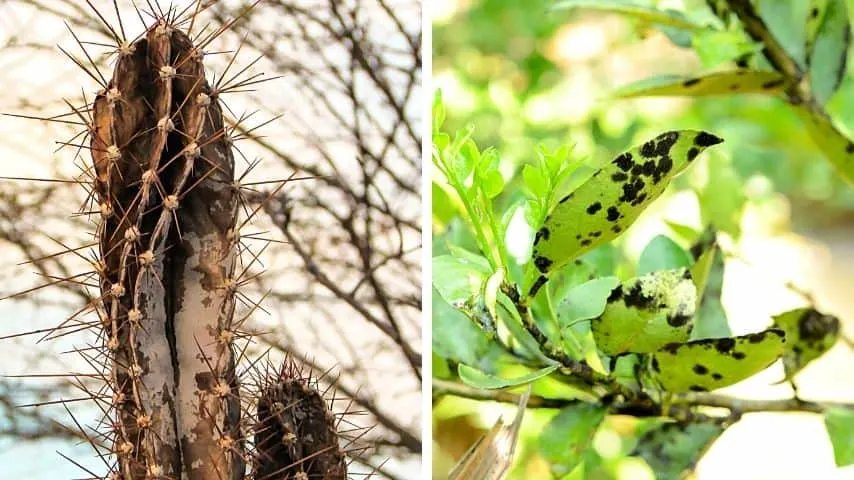
If you suspect fungal issues, re-pot your Mandevilla in fresh soil, disinfect the pot it was in, and purchase a fungal spray safe for flowering plants. This process should take care of most fungal attacks on Mandevilla.
4. Bacterial Wilt
When the outdoor temperatures shoot up to 85 degrees Fahrenheit, bacterial wilt can become a problem for Mandevilla plants and their owners.
In the case of bacterial wilt, bacteria will block the Mandevilla’s vascular tissues, so nutrients don’t reach the plant.
As a result, the leaves begin turning yellow, then brown, and then wilt. Bacterial wilt can be tricky to eradicate, but a specialized fungicide (formulated with copper) can work.
Also, trim the dying leaves and water the plant well.
Frequently Asked Questions about Mandevilla Leaves Turning Brown
What is the leading cause of Mandevilla leaves turning brown?
The primary reason for brown Mandevilla leaves tends to be underwatering. If your plant is well watered, you should consider a bacterial or fungal issue, as well as the possibility of environmental stress.
If my Mandevilla is turning brown, does that mean it’s dying?
When Mandevilla leaves turn brown, it signals that something is wrong. Most problems that cause browning in Mandevilla can be fixed, so if you notice a couple of brown leaves, don’t toss your Mandevilla aside!
Conclusion About Why Mandevilla Leaves Are Turning Brown
Mandevilla leaves are turning brown for the following 4 reasons:
- Inconsistent watering
- Environmental stress
- Bacterial wilt
- Fungal attacks

Daniel has been a plant enthusiast for over 20 years. He owns hundreds of houseplants and prepares for the chili growing seasons yearly with great anticipation. His favorite plants are plant species in the Araceae family, such as Monstera, Philodendron, and Anthurium. He also loves gardening and is growing hot peppers, tomatoes, and many more vegetables.

